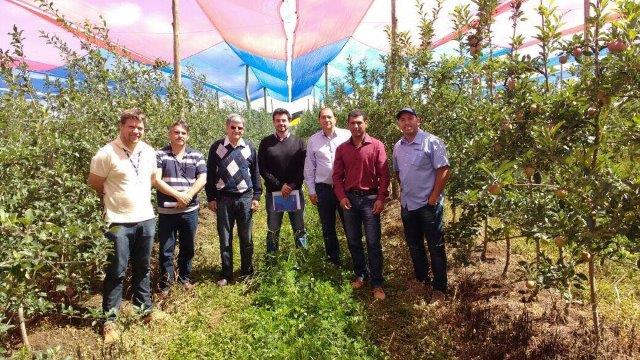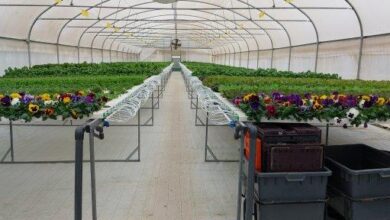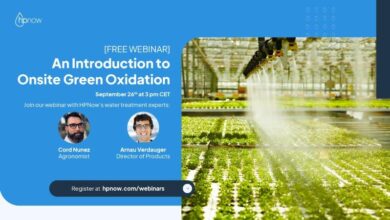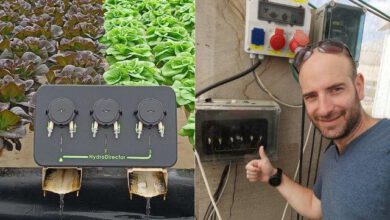Increased use of Shading Nets to Overcome Global Warming Damages
Use of nets helps to increase yield, since the nets maintain ground moisture
Yosi Ofir yosi_o@ginegar.co.il Ginegar

Whether we’re talking about cold or hot global zones, for several years global warming is causing weather extremes and frequent conditions that have far-reaching influence on agriculture, farmers and horticulture in various zones.
For example, if farmers suffered in the past from a single winter hailstorm, they’re now hit by multiple hailstorms. By contrast, in areas where farmers used to grow crops in heat, the plants absorb more radiation which causes heat stroke.
These phenomena force farms to switch to tunnel covered crops, greenhouses and nets. In open field crops the use of mulch films has expanded, which also helps farmers to cope with weather damage and to maintain high yields by conserving ground moisture.
Yosi Ofir, Ginegar Company agronomist, with 20 years’ experience in shading nets, recently participated in a conference held in Santa Catarina, Brazil, dealing with apple growing in the south of that large country.
The conference and exhibition accompanying it were devoted to presenting research results on apple growing, carried out by student investigators from Brazil and abroad. The Ginegar Company presented results of experiments with different types of netting, including photo-selective nets, from various areas around the globe, like Israel, South Africa, Spain, Italy, Chile, and the U.S., strengthening the hypothesis that spreading nets over orchards protects the trees from both frost and hail as well as extreme heat that causes heat stroke.
“In 2000,” Yosi told us, “we began to develop photo-selective nets in cooperation with Prof. Yosepha Shahak from the Vulcani Institute, to improve the light quality in orchards, and particularly in apple orchards. Since then, we have refined the methods and are trying to fit the net type to the crop type. We are witness to more and more farmers switching over to full orchard covering.”
 |
In the experiments presented at the conference, the micro-climate under the nets was examined, finding a drop-in temperature of the fruit itself, particularly using our Pearl Mesh that’s improves light distribution, so that the fruit was not exposed to direct radiation, and was thus less susceptible to heat stroke. Beyond reducing sun intensity, a lowering of wind intensity was found, and as a result there were less stressful conditions in the orchard.
Use of nets helps to increase yield, since the nets maintain ground moisture, with less ground evaporation, resulting in efficiency of water consumption by the trees. Indeed, all the studies done in all zones and all crops – apricots, pomegranate, bananas – demonstrated that using nets enables reduction of irrigation.
 |
In many agricultural areas in the U.S., where the temperature during apple growth reaches 35 C., Yosi added, farmers tend to irrigate the crop from above, to reduce the fruit temperature. Use of nets has helped them to cease doing so, and thereby save water and spraying against diseases.
Over the years, information accumulated about use of nets has expanded. Yosi emphasizes the importance of matching the type of net to the variety. For red apple varieties this matching is especially important, since the net is likely to slow/reduce the fruit’s color. In an experiment run by the Ginegar Company on the Golan Heights, the opening and closing of the net was checked 3 weeks before harvest, and the result received using their Crystal Mesh was the best. Of course, opening and closing the nets requires advanced technology in order to facilitate the work.
 |
Covering the soil with reflective orchard mulch films (black/white, black/silver) improves the fruit’s color on the lower part of the tree, due to reflection of light by the film, turning into a sort of lower artificial illumination. Mulch films offer many additional advantages to the farmer: water and fertilizer savings.
In a project currently being carried out, the company’s staff are striving to develop a system for quick opening and closing of the nets that would allow better control for the grower in operating the orchard, such as closing the nets only after the fruit has set and the bees have done their work, with opening at the end of the season prior to snowfall.
Additional advantages enjoyed by farmers switching over to nets: strong, well-developed trees, high quality, smooth, better looking, larger fruit, protected from pests, with greater income produced by the orchard for the farmer. (The experiments also showed that farmers recoup the cost of installing nets relatively soon, between one to two years).
Given that farmers are forced to cope with difficult climatic conditions, the main question is not whether to cover the plants, but what is the most appropriate net for each crop. It’s a fact that in more and more places farmers realize that use of nets helps them to cope with weather fluctuations, to maintain high level yield, to maintain assurance of orderly, quality supply to retail chains, and profitability.




